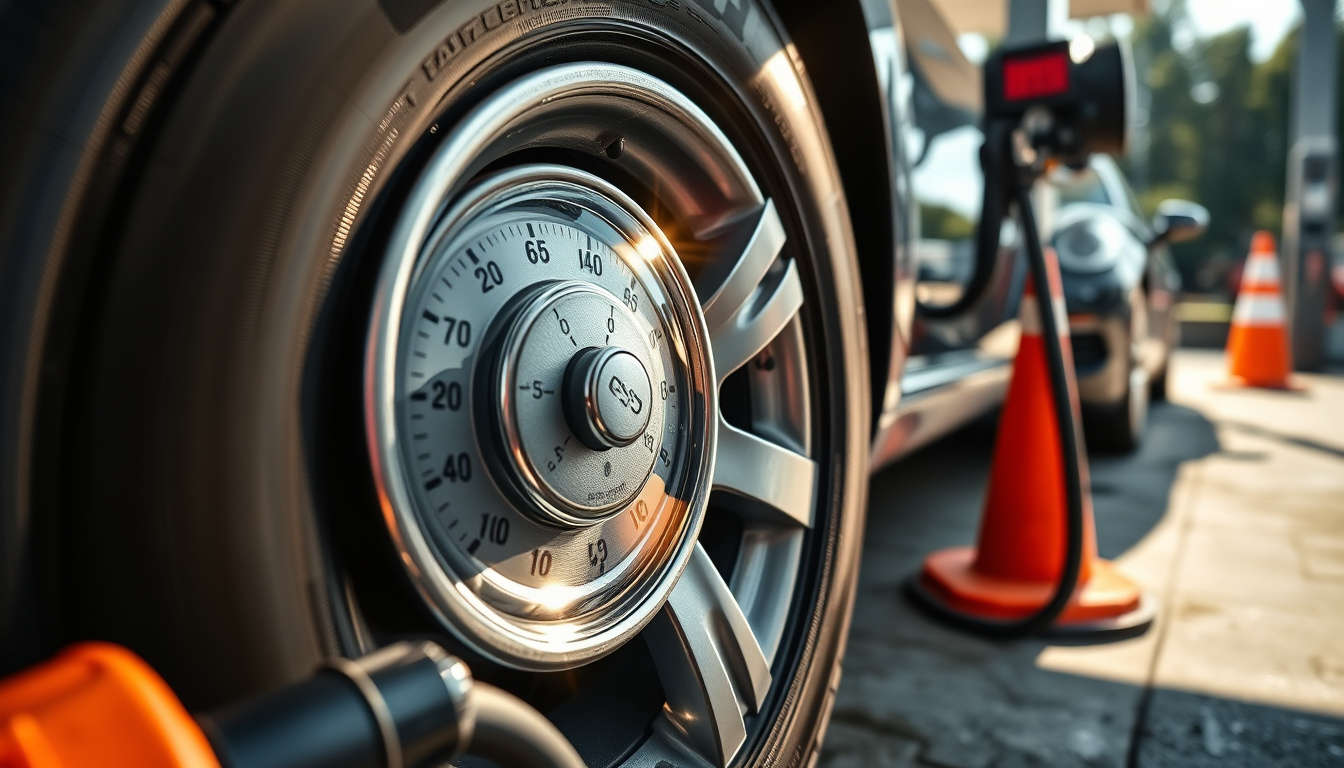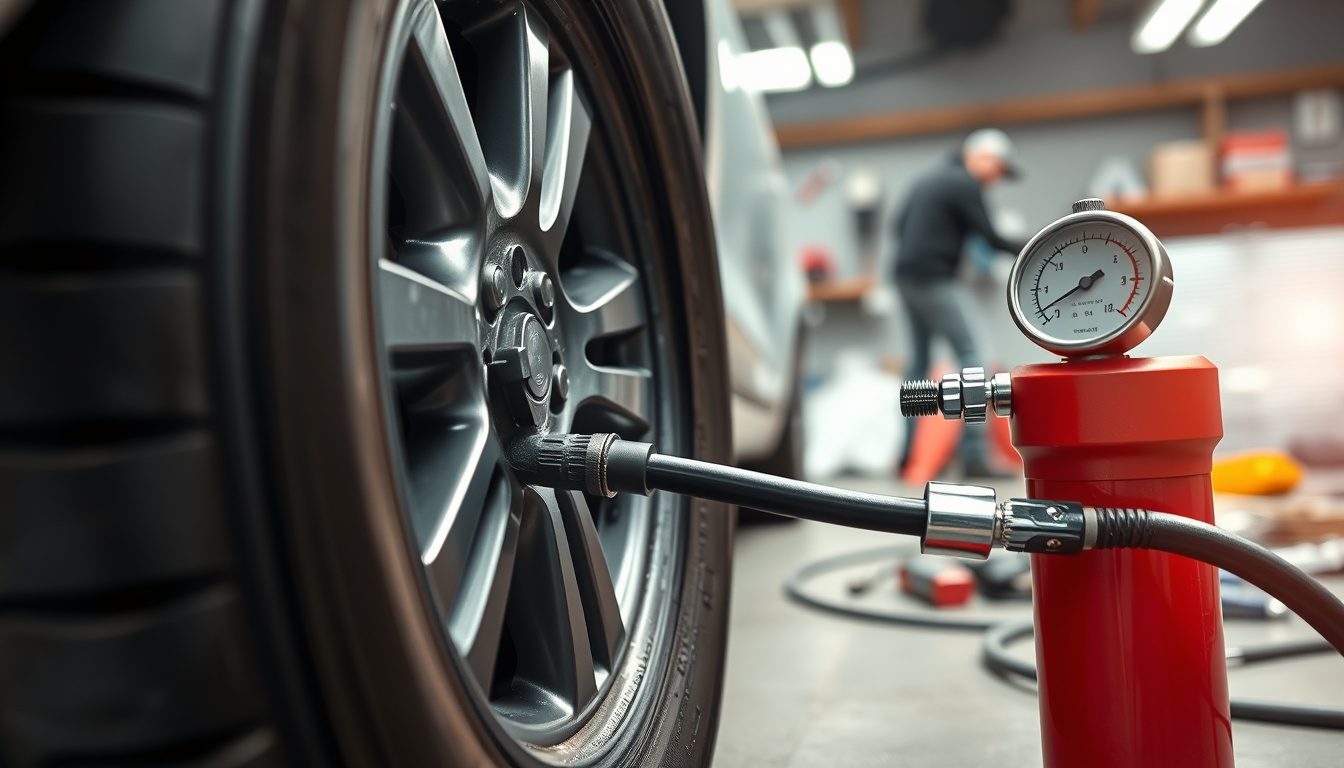The Ultimate Guide to Properly Inflating Car Tires for Optimal Safety and Performance
Ensuring your car tires are properly inflated is crucial for both safety and performance.
Underinflated or overinflated tires can lead to poor handling, decreased fuel efficiency, and an increased risk of tire blowouts.
In this ultimate guide to inflating car tires, we will provide you with the essential information you need to maintain the right tire pressure.
From understanding why tire pressure matters to a detailed step-by-step guide on how to inflate your car tires correctly, we’ll cover it all.
You’ll also learn the tools required, common mistakes to avoid, and how to know when your tires need attention.
Let’s buckle up and get started on the road to optimal tire care!

Key Takeaways
- Maintaining the correct tire pressure is crucial for vehicle safety and fuel efficiency.
- Essential tools for tire inflation include a tire pressure gauge and an air compressor.
- Follow a systematic step-by-step approach to ensure tires are inflated correctly.
- Avoid common mistakes such as overinflation or ignoring the recommended pressure guidelines.
- Regularly checking tire pressure can prevent wear and tear, enhancing overall vehicle performance.
Understanding Tire Pressure: Why It Matters
Understanding the importance of inflating car tires properly is vital for both safety and efficiency.
Tire pressure plays a crucial role in vehicle performance, influencing handling, fuel economy, and overall safety.
When your tires are under or over-inflated, it can lead to uneven tire wear, increased stopping distance, and a greater likelihood of tire blowouts, which can be dangerous while driving.
Keeping your tires inflated to the manufacturer’s recommended pressure ensures optimal contact with the road and enhances traction, which is especially important in adverse weather conditions.
Regularly checking and maintaining your tire pressure can also improve fuel efficiency, as properly inflated tires reduce rolling resistance, ultimately saving you money at the pump.
Therefore, take the time to regularly inspect your tires and ensure they are inflated correctly to enjoy a safer and more economical driving experience.
Tools You Need for Proper Tire Inflation
When it comes to inflating car tires, having the right tools can make all the difference in ensuring safety and optimal vehicle performance.
One essential tool is a high-quality tire pressure gauge, which allows you to accurately measure the current air pressure in each tire.
Digital gauges are becoming increasingly popular due to their ease of use and precision.
Next, an air compressor is crucial for inflating tires efficiently, especially if you’re tackling multiple vehicles or need to adjust pressure frequently.
Portable models can be conveniently kept in your car for on-the-go emergencies.
Additionally, valve stem caps are a simple yet vital component, as they protect against dirt and moisture that can interfere with your tire’s air retention.
Lastly, a reliable tire inflator with an automatic shut-off feature can prevent over-inflation and keep your tires in top condition.
Armed with these tools, you’ll be well-equipped for proper tire inflation, ensuring your vehicle is safe and running smoothly.
‘The tire is a very important thing on a car; people do not realize that until it becomes an issue. A good tire means better handling, better stopping ability, and increased safety on the road.’ – Anonymous
Step-by-Step Guide to Inflating Car Tires
Inflating car tires is a crucial aspect of vehicle maintenance that can greatly enhance your safety, fuel efficiency, and overall driving experience.
To begin with, gather the necessary tools: a reliable tire pressure gauge and an air compressor or a service station with an air supply.
First, check the recommended psi (pounds per square inch) for your tires, which can usually be found on a sticker inside the driver’s door frame or in the owner’s manual.
Once you have this information at hand, proceed to inspect the current pressure of each tire using the gauge.
If any tire is below the recommended level, it’s time to inflate.
Remove the valve cap from the tire, attach the air compressor hose, and start inflating.
Keep checking the pressure periodically to avoid over-inflation.
When the desired psi is reached, remove the hose and replace the valve cap securely.
Repeat the process for all tires, including the spare if applicable, ensuring that your vehicle is equipped for any unexpected situations.
Regularly checking tire pressure not only prolongs the life of your tires but also contributes to better fuel economy and handling, making the process of inflating car tires essential for every vehicle owner.

Common Mistakes to Avoid When Inflating Tires
When it comes to inflating car tires, many drivers make common mistakes that can lead to decreased performance, fuel efficiency, and even safety issues.
One of the most prevalent errors is neglecting to check the recommended tire pressure.
Each vehicle has a specific PSI (pounds per square inch) range, typically found on a sticker inside the driver’s door or in the owner’s manual.
Over-inflating tires can result in a harsher ride and increased risk of a blowout, while under-inflated tires may cause sluggish handling and poor fuel economy.
Additionally, failing to measure tire pressure when they are cold can give inaccurate readings, as heat from driving increases PSI.
Another mistake is relying solely on the pressure gauge at gas stations, which can often be faulty.
Investing in a good-quality tire pressure gauge can help ensure accurate readings every time.
Lastly, many drivers overlook checking their spare tire, which can be just as crucial as the tires in use.
By avoiding these common mistakes when inflating car tires, you can enhance your driving experience, safety, and vehicle longevity.
How to Check Your Tire Pressure Regularly
Maintaining optimal tire pressure is crucial for ensuring your vehicle’s safety and performance.
Regularly checking your tire pressure can prevent issues such as uneven wear and tear, decreased fuel efficiency, and compromised handling.
To begin inflating car tires properly, invest in a reliable tire pressure gauge and familiarize yourself with the recommended pressure levels listed in your vehicle’s manual or on the driver’s side door jamb.
Aim to check your tire pressure at least once a month and before long trips, particularly when the tires are cold, as temperature variations can affect readings.
If your tires are under-inflated, use an air compressor to inflate them to the specified levels, ensuring a smoother and safer ride.
Additionally, make it a habit to inspect your tires for any visible signs of damage, such as bulges or cracks, to maintain their longevity and performance.
Frequently Asked Questions
Why is it important to maintain proper tire pressure?
Maintaining proper tire pressure is crucial for safety, fuel efficiency, and optimal vehicle performance.
Underinflated tires can lead to poor handling, increased tire wear, and higher fuel consumption, while overinflated tires can reduce traction and cause a harsher ride.
What tools do I need to inflate my car tires?
To properly inflate your car tires, you will need a tire pressure gauge, an air compressor (either portable or at a gas station), and possibly a tire inflator nozzle to ensure a secure connection.
How can I determine the correct tire pressure for my vehicle?
The correct tire pressure for your vehicle can usually be found on a sticker located on the driver’s side door jamb, in the owner’s manual, or by consulting the manufacturer’s website.
It’s important to use the recommended pressure, which may differ between front and rear tires.
What common mistakes should I avoid when inflating my tires?
Common mistakes include over- or under-inflating the tires, failing to check the pressure when tires are cold (not driven for at least three hours), and neglecting to recheck tire pressure regularly after initial inflation.
How often should I check my tire pressure?
You should check your tire pressure at least once a month and before long trips.
Changes in temperature can also affect pressure, so it’s advisable to check more frequently during extreme weather conditions.